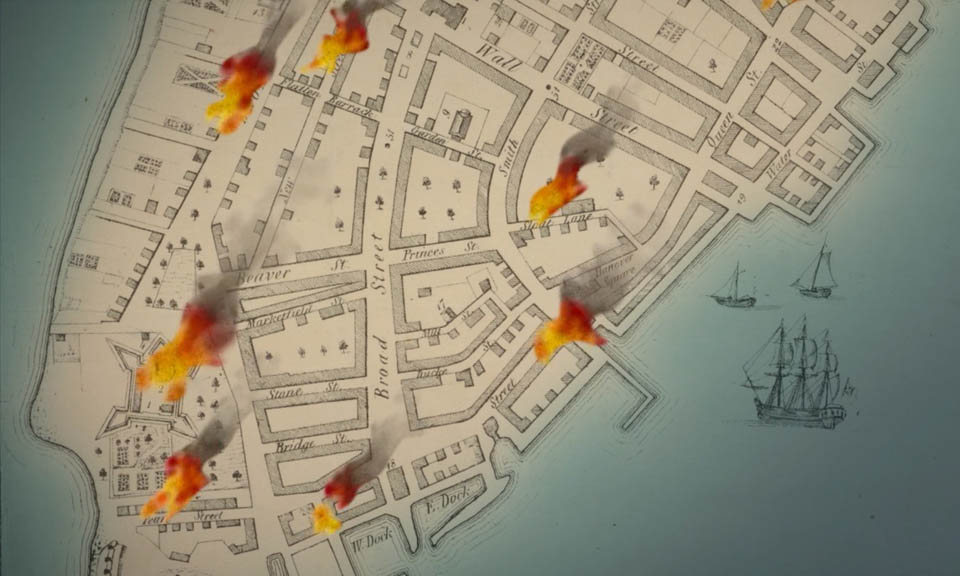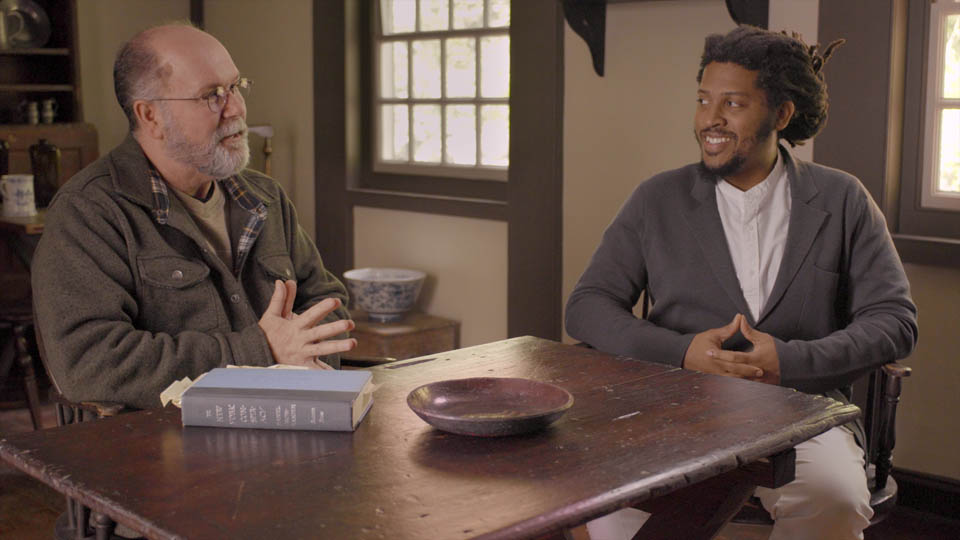Burning the City of New York
The Rebellions of 1712 and 1741
The Western Ocean
1720
Unknown
This map of the Atlantic world from the atlas The English Pilot, the Fifth Book, shows navigation routes that linked Africa and Europe to the colonial Americas and the West Indies.
Mariner's Museum and Park.
New York Slave Market
19th centuy
Unknown
In 1711, members of the New York Common Council passed a law to stating that "all Negro and Indian slaves that are let out to hire…be hired at the Market house at the Wall Street Slip…” , thereby establishing New York's slave market, located on Wall Street between Pearl and Water Streets. No longer standing, the site is now recognized with a historical marker.
GRANGER — All rights reserved.
March of the Ashanti Warriors
c. 1880
Unknown
Although this image dates to the late 19th century, it captures the the energy and fighting spirit of Ashanti people, part of the Akan community. Men from the Akan region formed part of the group who rebelled against their status as enslaved people in 1712 in New York City.
The Print Collector / Alamy Stock Photo.
Peasants Fleeing a Burning Barn
c. 1655
Egbert Lievensz van der Poel (Dutch, 1621–1664)
Fire destroys a barn similar to those built in rural New Jersey during the colonial period.
Detroit Institute of Arts.
A View of Fort George with the City of New York from the Southwest
c. 1764
John Carwitham, engraver (English, active 1723–1741)
This image shows Fort George clearly, with the English flag raised.
Library of Congress.
Men loading a boat with barrels
mid-18th c.
Samuel Scott (English, c. 1702–1772)
Poor white laborers along with enslaved men faced trial and punishment for their alleged role in the 1741 rebellion.
Yale Center for British Art, Paul Mellon Collection.
Snow at Philipsbrug Manor
Philipsburg Manor, Sleepy Hollow, New York.
Historic Hudson Valley.
Drinking vessels in the Ferry House tavern
Van Cortlandt Manor, Croton-on-Hudson, New York.
Historic Hudson Valley.
Tavern in the Ferry House
Van Cortlandt Manor, Croton-on-Hudson, New York.
Historic Hudson Valley.
Elihu Yale with his Servant
18th century
James Worsdale (British, c. 1692–1767)
This portrait of Yale also includes a young enslaved man as Yale's attendant.
Yale University Art Gallery, Gift of Mrs. Anson Phelps Stokes.
A Plan of the City and Environs of New York as they were in the years 1742, 1743 and 1744
1854
David Grimm (American, c. 1737–unknown)
Although David Grimm created this map much later in his life, the places he remembered from his childhood, including execution sites, are clearly marked.
Lionel Pincus and Princess Firyal Map Division, The New York Public Library.
Representation Du Feu Terrible A Nouvelle Yorck
After 1776
Franz Xaver Habermann (French, 1721–1769)
In 1741, a series of fires, like the one shown here which occurred during the Revolutionary War, led to a wave of fear among New Yorkers. The trials of those allegedly involved led to the convictions and executions of a number of enslaved men of African descent and of poor white men.
Library of Congress.
Daniel Horsmanden
mid-18th c.
Matthew Pratt (American, 1734–1805)
Daniel Horsemanden, one of the judges in the New York conspiracy trial of 1741, compiled his notes and trial records, along with his own description of the events. Horsemanden's narrative provides a biased account of trial and a record of justice denied.
Harvard Law School Library, Historical & Special Collections.
Slaves in Court
late 19th c.
Unknown
This image is intended to illustrate an event for which no historical visual record exists, the verdict in a trial in which an enslaved men—Mark in Massachusetts, or Cuffee in New York City—is found guilty and sentenced to death.
Sarin Images/ Granger — All rights reserved.
Title page of A Journal of the Proceedings...
1744
James Parker, printer (English?, active 1744)
A reproduction of the title page of the earliest printed account of the trial of 1741 refers to the events as "the detection of the conspiracy."
Historic Hudson Valley.
Executing Negroes in New York
19th century
Unknown, after Alfred Rudolf Waud (American, born England, 1828–1891)
This illustration shows the brutal final punishment resulting from the 1741 conspiracy trial.
GRANGER — All rights reserved.
A List of the White Persons Taken into Custody on Account of the Conspiracy
1744
James Parker, printer (English, active New York, 1744)
A table of people arrested for the 1741 conspiracy appeared in Daniel Horsmanden's account of the trials, along with the dates of their convictions and executions.
Historic Hudson Valley.
A List of Negroes Committed on Account of the the Conspiracy
1744
James Parker, printer (English, active New York, 1744)
A table of the enslaved people arrested for the 1741 conspiracy appeared in Daniel Horsemanden's account of the trials, along with the names of their enslavers and the dates of their convictions and punishments.
Historic Hudson Valley.
Produced by Historic Hudson Valley for People Not Property: Stories of Slavery in the Colonial North Interactive Documentary.
Copyright © 2019-2025 Historic Hudson Valley. All Rights Reserved.



